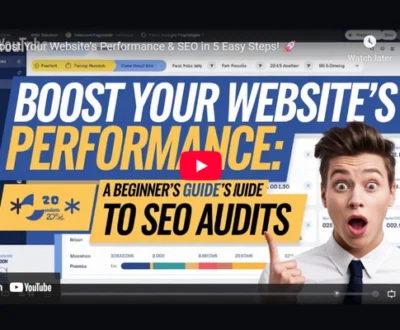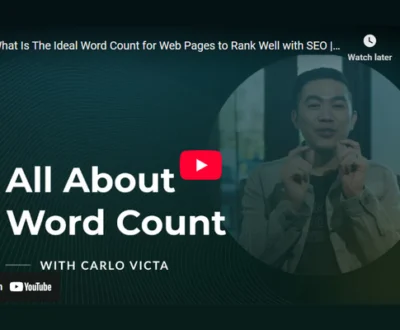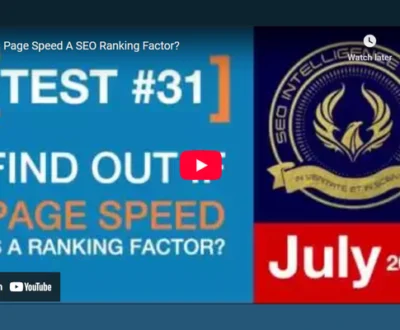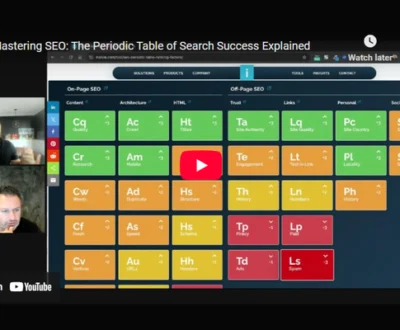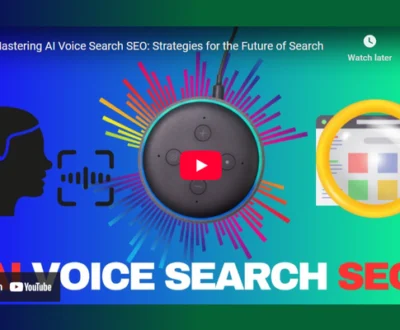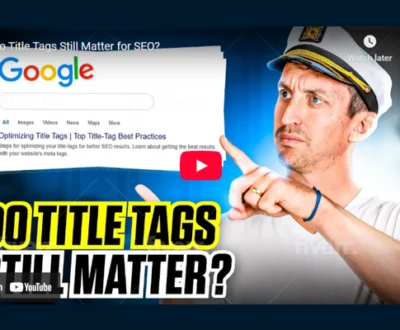Keyword research for SaaS starts with understanding your ideal customer and their specific pain points, which helps target relevant, high-intent keywords. I use tools like Ahrefs and Google Search Console to analyze competitors and spot keyword gaps, then prioritize and cluster keywords by intent and buyer journey stage. Aligning this strategy with your sales cycle boosts conversions and ROI. By focusing on data-driven insights tailored to your audience, you set a strong foundation to grow your SaaS effectively. Further insights follow.
- Key Takeaways
- Understanding the Role of Keyword Research in SaaS SEO
- Defining Your Ideal Customer Profile and Pain Points
- Leveraging Tools and Data Sources for Comprehensive Keyword Analysis
- Analyzing Competitors to Identify Keyword Gaps and Opportunities
- Categorizing Keywords by Intent and Buyer Journey Stages
- Prioritizing and Clustering Keywords for Topical Authority
- Aligning Keyword Strategy With Saas Sales Cycles and Conversion Goals
- Frequently Asked Questions
- Final Thoughts
Key Takeaways
- Define your ideal customer profile and identify their pain points to tailor keyword research effectively to their specific language and needs.
- Use tools like Ahrefs, SEMrush, and Google Search Console to analyze keyword volumes, competition, and competitor strategies for informed targeting.
- Prioritize and cluster keywords based on business relevance, search intent, and funnel stage to build topical authority and align with buyer journey.
- Map keywords to SaaS sales funnel stages—awareness, consideration, decision—to deliver relevant content that boosts conversion rates.
- Measure keyword impact on sales using analytics and CRM integration to refine strategy and ensure SEO efforts drive sustained revenue growth.
Understanding the Role of Keyword Research in SaaS SEO
Keyword research plays an essential role in shaping a successful SaaS SEO strategy by acting as its foundation. Understanding the keyword importance helps me build the website’s structure and optimize on-page elements effectively.
By analyzing user behavior, I can identify what potential customers are searching for and why. This insight allows me to target high-intent keywords that attract visitors genuinely interested in the SaaS product. It also guides content creation to address specific needs at different stages of the buyer’s journey, improving relevance and engagement. Covering all types of search intent enhances authority and improves SEO ROI over time by addressing search intent.
Additionally, keyword research shapes how potential clients discover the product online, increasing organic traffic and lead quality. Without this foundation, SEO efforts risk attracting irrelevant visitors or missing vital opportunities.
Defining Your Ideal Customer Profile and Pain Points
Before I can effectively target search terms, I need a clear picture of who my ideal customers are and what challenges they face. Defining the ideal customer involves outlining demographic, firmographic, technographic, and psychographic traits to identify those most likely to benefit from my SaaS product. Every business has an Ideal Customer Profile that guides targeting, pitching, and upselling efforts to ensure resources are not wasted on misaligned prospects.
This profile helps me tailor keyword research to the specific language my audience uses. Equally important is defining painpoints—those specific problems or frustrations my customers experience that my product aims to solve.
To uncover these pain points, I analyze sales calls, customer support tickets, and reviews, ensuring I understand the terms customers use to describe their issues. Focusing on these pain points lets me prioritize high-intent, long-tail keywords that address real needs, increasing the chances of attracting qualified leads.
Leveraging Tools and Data Sources for Comprehensive Keyword Analysis
Although identifying your ideal customer and their pain points sets a strong foundation, leveraging the right tools and data sources is crucial for conducting thorough keyword analysis.
I start by applying keyword selection techniques that combine data from SEO suites like Ahrefs or SEMrush, which offer extensive keyword databases and metrics evaluation methods such as search volume, keyword difficulty, and CPC.
Integrating data sources like Google Search Console and Keyword Planner adds valuable insights, particularly on organic vs paid keywords and user intent focus. I pay attention to SERP feature assessment to understand how these elements impact click potential.
Long tail keyword strategies emerge by using Google Autosuggest and customer feedback, revealing specific queries and pain points.
While competitor keyword analysis is essential, I avoid diving too deep here, as that’s a separate topic.
Using a tool comparison analysis helps me choose the best fit for each project, ensuring thorough coverage and accurate keyword targeting.
Analyzing Competitors to Identify Keyword Gaps and Opportunities
When I analyze competitors to uncover gaps and opportunities, I start by clearly identifying who they are—this includes not only direct rivals with similar solutions but also indirect and SEO competitors who may target the same audience or keywords differently. Using competitor analysis tools like Semrush or Ahrefs, I extract the keywords they rank for and compare them with my own site’s keywords to spot gaps. Identifying these keyword gaps reveals opportunities where competitors rank well, but I don’t. Prioritizing these can improve my content strategy and search visibility.
Here’s a simple comparison table to illustrate:
| Competitor | Keywords Ranking For | Gap Opportunity |
|---|---|---|
| Competitor A | SaaS CRM, Lead Management | Project Management SaaS |
| Competitor B | Cloud Storage, Data Backup | Collaboration Tools |
| Competitor C | Email Automation, Marketing | Customer Onboarding SaaS |
| Competitor D | Analytics, Reporting | Workflow Automation |
| Competitor E | Helpdesk Software, Ticketing | Team Communication |
This keyword identification helps me refine my SEO focus effectively.
Categorizing Keywords by Intent and Buyer Journey Stages
Since understanding the intent behind keywords is essential, I start by categorizing them according to their purpose and where they fit in the buyer’s journey. I use intent classification to group keyword types into informational, commercial investigation, and transactional categories.
This helps me align content formats with search queries, ensuring content matches user motivations and search patterns. For example, informational keywords often include modifiers like “how to” or “what is,” targeting the awareness stage with educational content.
Commercial investigation keywords, containing terms like “compare” or “review,” suit the consideration stage, where prospects evaluate options. Transactional keywords, with action verbs such as “buy” or “sign up,” focus on the decision stage.
Prioritizing and Clustering Keywords for Topical Authority
When prioritizing keywords, I focus on factors like business relevance, search volume, and competition to target terms that bring real value to my SaaS offering.
Once I’ve a prioritized list, I group related keywords into clusters based on their meaning and user intent.
This approach helps me build topical authority by creating content that thoroughly covers specific themes and signals expertise to search engines.
Keyword Prioritization Criteria
Although keyword research often starts with generating a broad list of terms, prioritizing and clustering those keywords is vital to build topical authority effectively.
I rely on keyword research tools to evaluate search volume, keyword difficulty, and competitor strategies, ensuring I focus on terms with a good balance of traffic potential and achievable ranking difficulty.
Search intent analysis is significant; I classify keywords by intent—informational, commercial, or transactional—so I prioritize those matching my SaaS product’s goals and audience needs.
I also consider business value, favoring keywords that drive conversions and fit the buyer’s journey.
Finally, I assess how each keyword contributes to topical authority, selecting ones that support a thorough content strategy rather than isolated targets, helping establish expertise in my SaaS niche.
Building Keyword Clusters
Before I start building keyword clusters, I focus on gathering an extensive keyword list centered around a specific topic. This list allows me to group keywords sharing similar search intent and semantic relevance, which is essential for effective cluster organization. I prioritize content optimization by selecting a primary keyword and supporting secondary keywords for each cluster. Using SEO tools or manual analysis, I guarantee clusters align with user intent to improve topical authority.
| Keyword Type | Intent | Cluster Role |
|---|---|---|
| Primary Keyword | Commercial | Main focus |
| Secondary Keywords | Informational | Support and detail |
| Long-tail Keywords | Transactional | Niche targeting |
This method enhances SEO by covering topics thoroughly and streamlining content strategy.
Aligning Keyword Strategy With Saas Sales Cycles and Conversion Goals
I focus on mapping keywords to the different stages of the SaaS sales funnel to guarantee content reaches prospects at the right time.
Timing content strategically helps guide potential customers smoothly from awareness to decision, boosting conversion chances.
Mapping Keywords to Funnel
When you map keywords to the sales funnel, you align your SEO efforts with how SaaS customers research and decide on solutions. This process hinges on understanding keyword intent and guaranteeing content alignment across the funnel stages: awareness, consideration, and decision.
By assigning keywords to specific pages, you guide prospects smoothly through their journey, increasing conversion chances. Here’s why it matters:
- It targets users with relevant content matching their current needs.
- It improves the effectiveness of your marketing by focusing on conversion-driven keywords.
- It helps differentiate your SaaS product at each stage of the buyer’s journey.
- It streamlines content creation, guaranteeing every piece serves a strategic purpose.
Mapping keywords to funnel stages guarantees your SEO strategy supports your sales cycle and conversion goals effectively.
Timing Content for Conversion
Since SaaS sales cycles can vary widely depending on factors like product complexity and customer type, timing your content to match these cycles is essential for maximizing conversion.
Understanding where prospects are in the sales funnel helps tailor your keyword strategy effectively. Early-stage content should use broad, informational keywords to build awareness, while mid-cycle content benefits from solution-oriented keywords focusing on features and comparisons.
For late stages, prioritize high-intent keywords like “free trial” or “pricing” that drive decisions. Aligning content timing with these stages supports targeted conversion strategies, ensuring prospects receive relevant information when they’re ready to act.
Additionally, scheduling content formats—like blog posts for education and case studies for decision-making—enhances engagement and conversion potential throughout the sales cycle.
Measuring Impact on Sales
Although keyword research is often seen as a preliminary step in content marketing, measuring its impact on sales is essential for refining your SaaS keyword strategy. By aligning keywords with the customer journey, you can track performance and understand how specific terms influence conversions.
Conversion tracking and sales metrics help identify which keywords drive demo requests or trial sign-ups. ROI analysis ties keyword impact directly to revenue, guaranteeing your efforts support business goals.
For effective performance measurement, focus on:
- Monitoring conversion rates linked to targeted keywords
- Connecting SEO data with CRM to track paying customers
- Prioritizing high-intent keywords that match sales cycle stages
- Using tools like GA4 and Google Search Console for ongoing insights
This approach guarantees your keyword strategy supports sustained SaaS sales growth.
Frequently Asked Questions
How Often Should I Update My Saas Keyword Research?
I update my SaaS keyword research every three to six months, keeping an eye on keyword trends and seasonal fluctuations. This helps me stay relevant, adapt quickly, and capture new opportunities as they arise.
Can Voice Search Impact Saas Keyword Strategy?
Yes, voice search trends definitely impact SaaS keyword strategy. I focus on optimizing voice queries by targeting natural, long-tail phrases and question-based keywords to match how people speak, boosting relevance and search visibility effectively.
What Role Do Branded Keywords Play in Saas SEO?
Branded keywords build brand boosts by bolstering customer perception, bringing buyers closer. I focus on them to defend market share, drive direct traffic, and deliver dependable SEO results that deepen user trust and drive conversions.
How to Handle Keywords for Saas Features vs. Benefits?
When handling keywords, I focus on feature differentiation to highlight unique functions and benefit prioritization to show real user value. This balance guarantees I attract both early interest and buyers ready to choose our SaaS solution.
Should Saas Startups Focus on Long-Tail or Short-Tail Keywords First?
Isn’t it ironic that startups chase short-tail keywords despite all the challenges? I’d focus on long tail advantages first—they’re easier to rank for, cost-effective, and attract users ready to convert, unlike broad, competitive short-tail terms.
Final Thoughts
Keyword research for SaaS is like mapping a complex network—you need clear direction to reach your destination efficiently. By understanding your ideal customer, using the right tools, analyzing competitors, and organizing keywords by intent, you build a solid foundation for SEO success. Aligning this strategy with your sales cycle guarantees your efforts convert effectively. With a focused, data-driven approach, you can create content that not only attracts traffic but also drives meaningful business growth.
Windee Tan is a seasoned SEO Specialist with over a decade of experience helping businesses grow their organic visibility through data-driven strategies. He specializes in technical SEO, content optimization, and local search, with deep knowledge of tools like GA4, GSC, SEMrush, and Screaming Frog. Windee is passionate about translating complex SEO insights into practical tactics that drive real-world results. When he's not auditing sites or crafting keyword strategies, he’s exploring the latest trends in AI, digital marketing, and productivity.
About this blog
We are a digital marketing company with a focus on helping our customers achieve great results across several key areas.
Request a free quote
We offer professional SEO services that help websites increase their organic search score drastically in order to compete for the highest rankings even when it comes to highly competitive keywords.
Subscribe to our newsletter!
More from our blog
See all postsRecent Posts
- Writing Clear Calls to Action That Boost On-Page SEO 21 August 2025
- Why Word Count Still Matters in On-Page SEO Today 20 August 2025
- Why Site Speed Is Critical for On-Page SEO Success 19 August 2025


